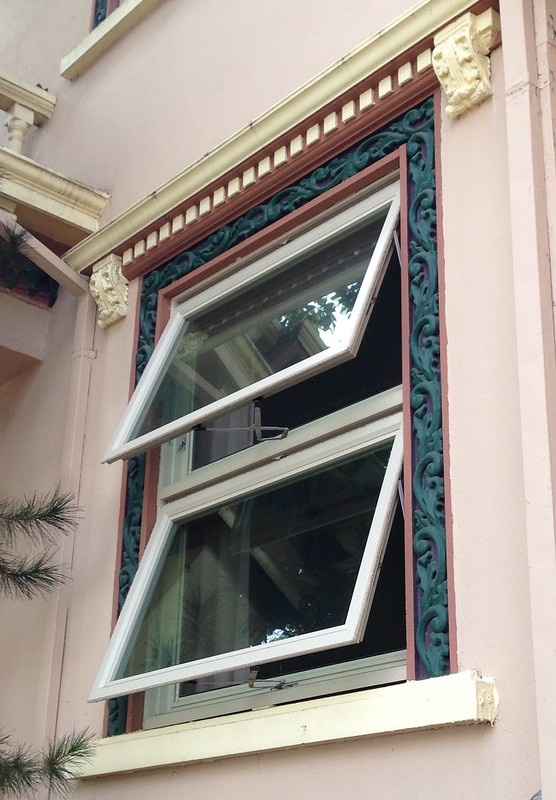Casement windows are old-fashioned, and to keep up with fashion, you probably want something modern.
Now the question is, can you replace casement windows with double-hung windows? Yes, you can replace casement windows with double-hung windows.

It doesn’t require much time to replace them. You might struggle to uninstall casement windows since they are a bit complicated; otherwise, everything else should be easy.
The old frame stays on wall stays on the wall, so you don’t have to remove/replace the structure. You just need to replace the window. So without further delay, let’s get into it.
The old frame stays on wall stays on the wall, so you don’t have to remove/replace the structure.
Replace Casement Windows with Double Hung Windows
In this portion, we will elaborate on how to replace casement windows with double-hung windows.
1. Take Measurement
First, you have to take measurements if you don’t have them. Open your casement window and take the width measurement. You should take the measurement across the opening of the window where the sash joins the frame.
After taking the measurement, you need to subtract ½ inches from it. Use the same method to take measurements of the height and again subtract ½ inch from it.
Now that you have the measurement, you can order your replacement windows.
2. Take Out the Window
For this step, you will need a screw gun, hammer, and a pry bar. Use the hammer and pry bar to pry the trim that works as an inner edge of the opening. When you take the trim out make sure it is still intact and not broken.
Now take out all the hardware and crank mechanism from the frame with the help of a screw gun. After unscrewing all of them, take out the casement window.
Read Also:
3. Take Out the Frame
For this step, you will need a reciprocating saw. And make sure you got a metal cutting blade installed. Now cut around the line from where you just removed the thin trim in the previous step. When cutting around the line you will notice there are some screws.
The purpose of these screws is to secure the casing; cut right through those screws, and take out the frame.
4. Set Double Hung Window
You are all set to install your double-hung windows. First, put your window unit into the opening. To set it properly, check if your window sits on the sill or not. Then gently pull or push the window upward and in. Do this till the window sits perfectly on to the inner edge of the opening on the trim.
5. Check Level
To check the level, hold your level side by side with the double-hung window unit. After checking, slide the shims in the middle of the frame and window till the unit stands straight. Use the level to check all sides of the window to ensure it’s vertical and level.
6. Securing
To secure your window, you will need to screw it to the frame. Usually, the screw comes with the unit; if it didn’t come with yours, then buy a few long mounting screws.
Use a screw gun to screw them; you will see the unit has holes on the sides; use them. And secure the window.
7. Finishing
To finish it up, apply insulation to the surrounding wall, and any space between the edges of the unit and the casing. You should use low-expansion foam insulation.
To hide the gap, reinstall the trim of the inner border that you took off or install a new one. You will need to nail the trim to the frame.
Lastly, use a bead of caulk anywhere you deem necessary.
Wondering how to replace a double-hung window with a casement? The replacement process is the same as this one.
8. Enhance Your Workspace
Now that you’ve successfully replaced those casement windows with double-hung ones, why not take your interior upgrade a step further? Consider revamping your workspace with some chic and functional office furniture.
If you’re in the Brisbane area, you’re in luck! There’s a fantastic selection ofoffice furniture Brisbanethat can add both style and functionality to your work environment.
Whether it’s ergonomic chairs, sleek desks, or modern storage solutions, you’ll find just the right pieces to elevate your workspace and make it a truly inspiring place to be. So, don’t stop at the windows – let your office space reflect your upgraded style too!
Cost of Replacing Casement Window with Double Hung Window
Double-hung window replacement can cost from 200$ to 1200$. 200$ being the cheapest and 1200$ being the most expensive double-hung window, for an average quality you can expect to spend 600$. These expenses are labor costs included.
The labor costs are around 90$ to 350$, depending on the location.
Contractors usually charge 38$ per hour to install double-hung windows. And it takes about an hour for a professional team to install it.
Replacing three-panel casement windows with double hung is perfectly ok.
Conclusion
Hopefully, after reading this article, you can replace casement windows with double-hung windows by yourself within an hour or two. Double-hung windows are in fashion, but that doesn’t mean casement windows are outdated.
You can replace a double-hung window with a casement too there is nothing wrong with it. Both windows are great and even blend well together.









